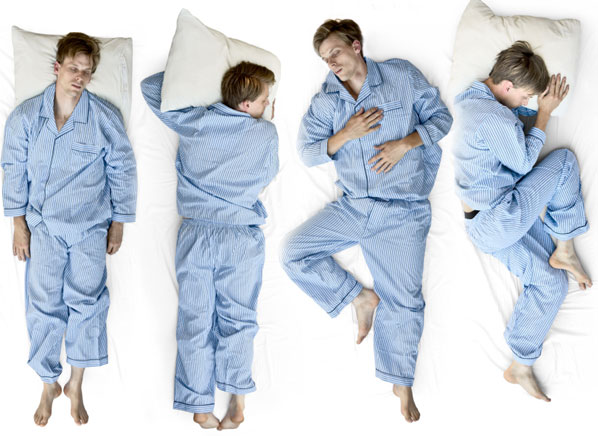Health Sleeping
In order that we may maximize this repair, healing and spinal adjustment, there is an ideal sleeping position. And, I know that this is not a very popular idea when I share it with my clients. However, once I realized that sleeping on my side was actually contributing to a few of my really big issues (namely my neck and lower back), I quickly made the necessary changes. And, honestly folks, this has been a huge help for me.
I’m talking about sleeping on your back. Now before you start composing your fiery email giving me all of the reasons that you can’t sleep on your back, hear me out with the following points:
Here are the positive points to sleeping on your back
- Creates an even pressure along your neck, spine, shoulders, hips and legs
-
No twisting of you lower spine (can lead to back, hip and leg issues)
-
No compression of shoulder, neck and upper back (can lead to neck, upper back, shoulder problems as well as arm, wrist and hand problems such as pain and numbness)
-
Sleeping on your stomach compresses and twists your neck and upper back (can lead to neck, upper back, shoulder, arm and hand issues)
-
Lets your internal organs settle into their ‘place’ rather than being pulled to one side or another when lying on your side
-
Allows for deeper breathing throughout the night as you sleep
Here are some of the potential problems with sleeping on your side or on your stomach
- Neck pain and muscle strain
- Arm or hand numbness
- Lower back tightness or pain
- Strain to hip joints
- Pain in knees
Ideal sleep position:
- On your back with a pillow under your knees (see the guy in the photo on the left).
- A small pillow just under your neck to support the curve in your neck (big, fluffy pillows push your head forward and could lead to neck straightening)
- Arms by your sides or resting on your abdomen
This may be a ‘training’ process for yourself. I know that it was for me. I actually had to force myself to lie on my back. You may want to try it for a few minutes each night and then slowly build up. You may be stretching different muscle groups in a new way so it may be uncomfortable for you at first.
If you find it too difficult for various reasons such as sleep apnea or digestion issues (see my post on this to find some ideas for help).
Here are some tips for supporting you while you sleep on your side:
-
Prop 1 thick or 2 smaller pillows up under your head so that your head is level with your body. This will prevent your head from hanging to the side which can put pressure on nerves and muscles in your neck. It will also help your lower shoulder from ‘scrunching up’ under the weight of your body.
-
Put a pillow between your knees. This can keep your upper knee from rolling down and twisting your pelvis and lower back
-
Prop a pillow behind your pelvis This can help support your lower back and pelvis so that your hips aren’t rolling forward or backward. Can prevent lower back, hip, and leg problems.
I hope this helps give you some more tools to support your body. Sleeping is a great way to improve your overall health. If you can give yourself some props and positioning to balance your joints and muscles, you may feel some great improvements in your joints and muscles.
My challenge to you this week:
Practice sleeping on your back for 5 nights. If you find it too uncomfortable to be able to sleep like this all night, use the props mentioned above.
Create a ‘sleep log’ for yourself to track your symptoms over the 5 nights. Note any changes in pain or tension and how rested you feel.

